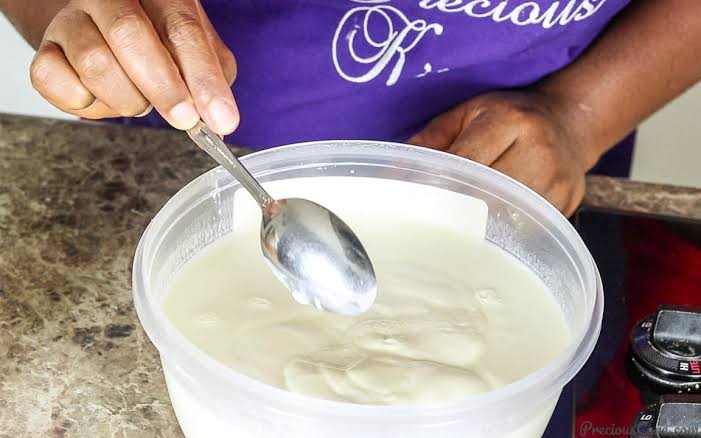Introduction
Fermented dairy products are highly valued worldwide for their nutritional richness, digestibility, and probiotic benefits. In Nigeria, one of the most popular traditional fermented dairy drinks is yogurt, known locally as “nono” or “kindirmo.” This tangy, refreshing beverage is widely consumed, especially in northern Nigeria, where Fulani pastoralists have perfected the art of natural milk fermentation over centuries.
Unlike thicker Greek or commercial yogurts, Nigerian-style yogurt is typically drinkable, mildly sour, and refreshing, often enjoyed plain, sweetened, or mixed with millet balls to form fura da nono, a nourishing meal-drink. With growing interest in local dairy processing and entrepreneurship, understanding how to make Nigerian-style yogurt offers opportunities for food security, nutrition, and income generation.
- Nutritional and Cultural Importance of Nigerian Yogurt
Nutritional Value
Rich in protein, calcium, vitamin B12, and probiotics.
Easier to digest than raw milk, as fermentation breaks down lactose.
Supports gut health and boosts immunity.
Cultural Heritage
Traditionally produced and sold by Fulani women in calabashes.
Integral to northern Nigerian diets and social gatherings.
Symbol of hospitality and communal sharing.
Economic Role
Provides income for pastoral households and dairy cooperatives.
Growing demand in urban markets creates opportunities for small-scale businesses.
- Characteristics of Nigerian-Style Yogurt
Texture: Smooth and drinkable (not thick like Western yogurts).
Taste: Tangy, slightly sour, sometimes sweetened with sugar or honey.
Fermentation: Natural lactic acid bacteria or added starter cultures.
Variants:
Plain nono: Unflavored, traditional style.
Sweetened yogurt: Mixed with sugar, fruit flavors, or honey.
Fura da nono: Yogurt blended with millet balls (fura), eaten as a meal.
- Step-by-Step Process of Making Nigerian-Style Yogurt
a. Milk Selection and Preparation
Use fresh cow’s milk (goat or sheep milk may also be used).
Filter milk through clean muslin cloth to remove debris.
Pasteurize by heating to 72°C for 15–20 seconds, then cool to 40–45°C.
This kills harmful microbes while preparing milk for fermentation.
b. Inoculation with Starter Culture
Traditional Method: Add a small portion of previously fermented milk (kindirmo) to act as a natural starter.
Modern Method: Use commercial yogurt starter cultures (Lactobacillus bulgaricus and Streptococcus thermophilus) for consistent results.
c. Fermentation
Pour inoculated milk into clean calabashes, clay pots, or containers.
Ferment at 25–30°C for 8–12 hours (overnight).
Lactic acid bacteria convert lactose to lactic acid, giving yogurt its sour taste and thicker texture.
d. Finishing
Stir well for smooth consistency.
Add sugar, honey, or fruit flavors if desired.
For commercial sales, package in sterilized bottles or sachets.
e. Storage
Keep refrigerated at below 5°C to preserve freshness.
Shelf life: 3–5 days under refrigeration; shorter without cold storage.
- Challenges in Nigerian Yogurt Production
Milk Quality Issues: Contamination from poor handling reduces yield and safety.
Limited Cold Chain: Lack of refrigeration in rural areas shortens shelf life.
Inconsistent Fermentation: Reliance on traditional starter cultures may cause variations.
Packaging Limitations: Traditional calabash serving may not suit urban retail markets.
- Opportunities for Growth and Innovation
Small-Scale Dairy Enterprises: Youth and women’s cooperatives can produce and sell yogurt in local communities.
Value Addition: Flavoring with mango, pineapple, or baobab powder to attract urban consumers.
Health Promotion: Marketing yogurt as a probiotic drink for gut health.
Modern Packaging: Affordable sachets or bottles extend reach to wider markets.
Integration with School Feeding Programs: Supplying pasteurized yogurt as a nutritious snack for children.
- Safety and Quality Control Tips
Always pasteurize milk before fermentation.
Use clean, sterilized containers to avoid contamination.
Standardize starter culture for consistent taste and texture.
Maintain proper hygiene and storage conditions throughout processing.
Conclusion
Fermented dairy in the form of Nigerian-style yogurt is more than just a drink—it is a cultural heritage, a nutritional powerhouse, and an economic opportunity. With simple processing methods, smallholder farmers, cooperatives, and entrepreneurs can transform raw milk into a safe, healthy, and marketable product. By combining traditional knowledge with modern food safety practices, Nigerian yogurt can move from calabashes in local markets to shelves in supermarkets, strengthening both nutrition and livelihoods across the country.

